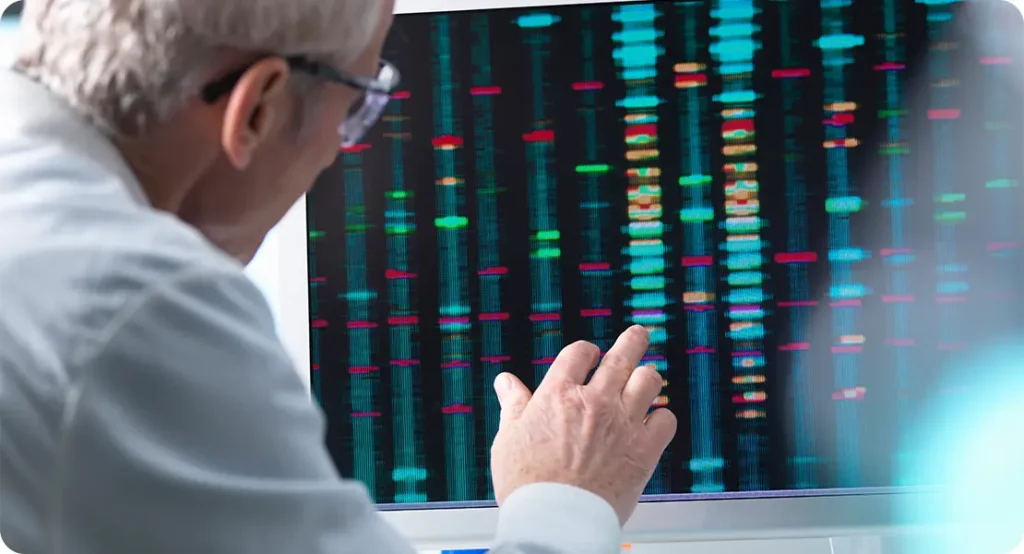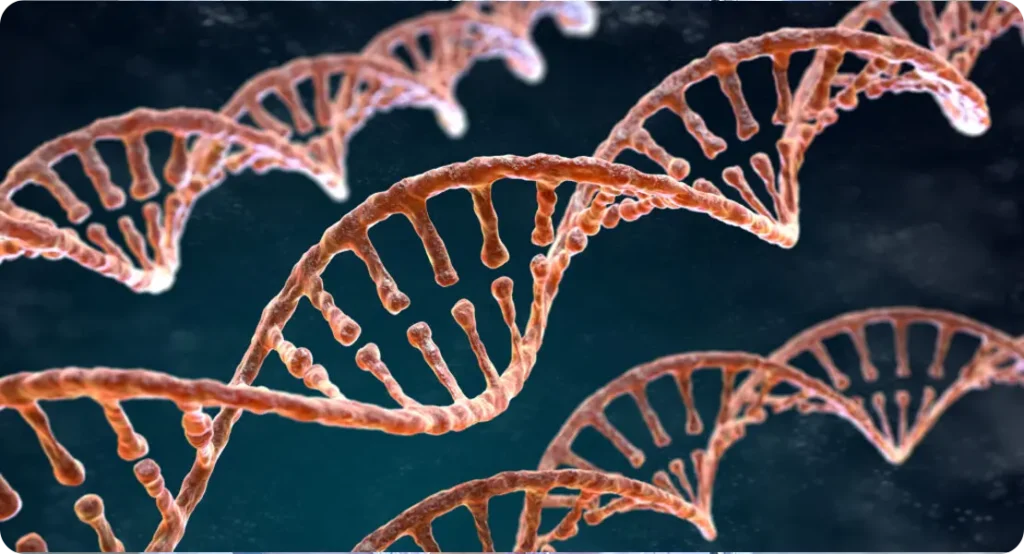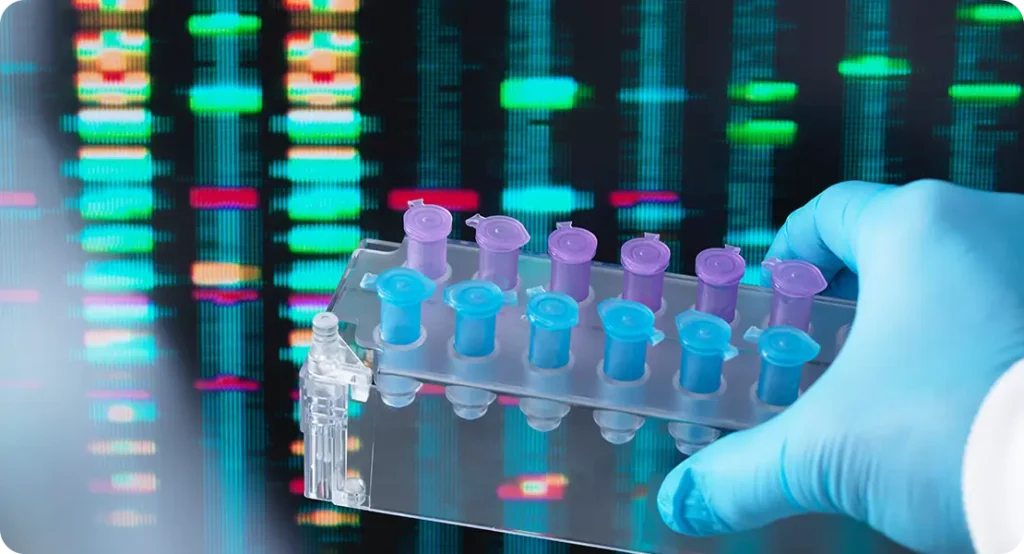If you’ve ever wondered whether cataracts “run in the family,” you’re not alone. While lifestyle choices and environmental exposures certainly play a role in how our lenses age, there’s now solid evidence showing that our DNA is a key part of the picture too. Thanks to advances in large-scale genome-wide association studies (GWAS) and the wealth of data from the UK Biobank, scientists are finally getting closer to answering some of the big questions around why certain people develop cataracts earlier or more severely than others.
In this article, we’re going to unpack how genetics contributes to age-related cataracts, explore some of the most important gene loci that have been identified, and look at what this all means for clinical care, risk prediction, and even future treatments. And don’t worry—we’ll keep the science digestible while diving into some pretty fascinating territory.
What Are Age-Related Cataracts—and Why Do They Matter?
Cataracts are the leading cause of blindness globally, and they’re incredibly common as we get older. But not all cataracts are the same. Age-related cataracts usually begin developing in the sixth or seventh decade of life and tend to progress over time, clouding the lens and making vision blurry, dull, or sensitive to light.
There are three main types—nuclear, cortical, and posterior subcapsular—each affecting different regions of the lens. And here’s where things get interesting: some people will get just one type, while others may develop combinations. Some people experience rapid progression; others hardly notice a change for years. What accounts for this variability?
Well, genetics plays a major role. While environmental factors like smoking, diabetes, and ultraviolet light exposure are still significant, the evidence is mounting that your genes can determine not only if but also how and when you’re likely to develop cataracts.
Why Study the Genetics of Cataracts?
You might be thinking: if we can treat cataracts effectively with surgery, why bother digging into the genetics? Fair question—but here’s why it matters.
Understanding the genetic landscape of cataracts isn’t just about curiosity. It’s about prevention, risk stratification, and perhaps even early interventions. If we can pinpoint people who are genetically predisposed to early or severe cataracts, we might one day delay their onset or design treatments that slow progression.
Plus, genetics gives us insights into the biology of the lens itself. Identifying genes involved in cataract development helps uncover the cellular pathways that go awry—many of which are relevant to other eye conditions and even broader ageing processes.
GWAS: A Game-Changer for Eye Genetics
Genome-wide association studies (GWAS) have revolutionised our ability to understand the genetic basis of common diseases. Instead of looking at one or two genes at a time, GWAS scan the entire genome of thousands—sometimes hundreds of thousands—of people to identify genetic variations that are more common in individuals with a specific condition.
When it comes to cataracts, GWAS has enabled researchers to move beyond the handful of genes suspected to play a role and uncover dozens of novel loci associated with different types of lens opacities. These discoveries are often replicated in multiple cohorts, increasing the confidence that the links are real.
One of the most powerful sources of data for these studies is the UK Biobank.
How the UK Biobank Is Driving Cataract Research
The UK Biobank is a massive prospective study involving over 500,000 participants aged between 40 and 69 at the time of recruitment. It includes genetic data, lifestyle information, health records, and even imaging data for many participants.
For cataract research, the UK Biobank is a goldmine. Not only can scientists identify which participants have developed cataracts, but they can also examine when, how severely, and what type. When matched with genotyping data, this allows for robust statistical analysis linking specific genetic markers to cataract risk.

The scale of the UK Biobank allows researchers to find even small-effect genetic variants that would otherwise be missed in smaller studies. That’s key because cataracts are polygenic—meaning they’re influenced by many genes, each contributing a small amount to the overall risk.
Major Gene Loci Identified in GWAS for Cataracts
Now let’s get into the details. What have these large studies actually found? Several gene loci have repeatedly turned up in GWAS and meta-analyses involving cataracts, particularly from the UK Biobank and other international cohorts. Here are some of the most significant:
1. CRYAA and CRYAB: The Crystallin Genes
Crystallins are the structural proteins of the lens, and mutations in CRYAA and CRYAB have long been associated with congenital cataracts. But even in age-related cataracts, variants in these genes have been shown to increase risk.
The CRYAA gene encodes alpha-A-crystallin, which helps maintain the transparency and refractive index of the lens. When the gene doesn’t function optimally due to genetic variation, proteins may misfold or clump together, leading to clouding of the lens over time.
Similarly, CRYAB encodes alpha-B-crystallin, a small heat shock protein with chaperone-like properties. Alterations in CRYAB can impair its ability to prevent protein aggregation, a hallmark of cataract formation.
2. EPHA2: A Key Player in Lens Cell Signalling
Another gene that shows up frequently is EPHA2. It encodes a receptor tyrosine kinase involved in cell-to-cell signalling, and its role in maintaining lens cell structure has been well-documented.
Mutations in EPHA2 are linked with cortical and nuclear cataracts. Functional studies suggest that EPHA2 regulates lens fibre cell shape and differentiation—both essential for lens clarity. Disruption of this pathway can lead to disorganisation and opacity.
Interestingly, EPHA2 variants also show associations with other age-related eye diseases, hinting at shared biological pathways that could be targeted therapeutically.
3. LIM2 and MIP: Lens Membrane Proteins
LIM2 (lens intrinsic membrane protein 2) and MIP (major intrinsic protein of the lens) are integral membrane proteins that help maintain lens transparency by regulating water permeability and cellular connectivity.
GWAS results have highlighted variants in these genes, especially in relation to nuclear and mixed-type cataracts. Changes in the structure or expression of these proteins can disturb the precise organisation of lens fibres and increase susceptibility to age-related changes.
The findings reinforce that maintaining lens hydration and intercellular transport is crucial for long-term clarity—and that even subtle genetic shifts can have long-term effects.
4. GJA3 and GJA8: Gap Junction Genes
The genes GJA3 and GJA8 code for connexin proteins—Cx46 and Cx50, respectively—that form gap junctions in the lens. These junctions are critical for metabolite exchange and maintaining lens homeostasis.
Variants in these genes have been found in congenital and age-related cataracts alike. GWAS has confirmed their role in adult-onset cataract susceptibility, especially nuclear subtypes. Disrupted intercellular communication can make the lens more vulnerable to oxidative damage and protein aggregation over decades.
5. LSS: Lanosterol Synthase and Protein Solubility
The LSS gene encodes lanosterol synthase, an enzyme involved in cholesterol biosynthesis. But its relevance to cataracts came into focus when researchers discovered that lanosterol can dissolve protein aggregates in cataractous lenses.
Variants in LSS have now been linked to age-related cataracts in several GWAS, and the gene is under active investigation as a therapeutic target. Animal studies even show that lanosterol eye drops might reverse early-stage cataracts—though human trials are still ongoing.
6. HSF4: A Regulator of Lens Protein Expression
Heat shock transcription factor 4 (HSF4) has emerged as another important locus from GWAS of age-related cataracts. This gene helps regulate the expression of various heat shock proteins, including crystallins, during lens development and stress responses.
Mutations in HSF4 are already known to cause congenital cataracts, but common variants have now been linked with age-related cataract risk as well. The reason? When HSF4 function is impaired, the protective response to oxidative stress and misfolded proteins weakens. This leaves the lens more vulnerable to the slow accumulation of damage that defines age-related cataractogenesis.
Interestingly, HSF4 might also interact with other loci in a polygenic risk context—meaning it could modify the effect of other cataract-related genes depending on the variant present.
Polygenic Risk Scores: Are We Close to Predicting Cataracts?
With so many different genetic loci identified, one natural question is whether we can combine this information to create a meaningful “polygenic risk score” for cataracts. In theory, this would involve summing the effects of dozens or hundreds of risk-associated variants into a single number that estimates an individual’s overall genetic risk.
This concept is already being trialled for diseases like coronary artery disease and type 2 diabetes. For cataracts, progress is being made, but we’re not quite there yet in clinical settings. Most current polygenic scores for cataracts explain only a modest percentage of the variance in risk—perhaps 5–10%—which is not yet strong enough to guide medical decisions on its own.

However, when combined with other risk factors such as diabetes status, UV exposure history, and medication use (like corticosteroids), genetic scores may one day help identify high-risk individuals who would benefit from earlier screening or preventive strategies.
Gene–Environment Interactions: A Two-Way Street
One of the fascinating aspects of cataract genetics is how it interacts with environmental exposures. Just because you carry a risk variant doesn’t mean you’re destined to get cataracts—it depends on how those genes respond to the world around you.
Take for example oxidative stress. Genes like CRYAA or EPHA2 may increase susceptibility to damage, but lifestyle factors like smoking, diet, and UV exposure are what actually trigger that damage. In a sense, your genes may load the gun, but the environment pulls the trigger.
Research from the UK Biobank is starting to map out these interactions in detail. For instance, certain gene variants show stronger associations in people with high UV exposure or poor antioxidant intake, suggesting that lifestyle changes could mitigate some genetic risks.
Ethnic and Population-Specific Genetic Differences
It’s also important to acknowledge that genetic risk isn’t uniform across all populations. The majority of GWAS to date, including many based on UK Biobank data, have focused on individuals of European ancestry. But other studies are now emerging that reveal population-specific loci in Asian, African, and Hispanic cohorts.
For example, certain variants near the PAX6 gene have shown associations in Asian populations that are not observed in European cohorts. Similarly, the prevalence and effect size of some crystallin gene variants differ depending on ethnic background.
This has major implications for global cataract prevention strategies. Risk scores and screening guidelines based on European data may not translate well to other populations—highlighting the need for more diverse genetic research in ophthalmology.
Clinical Implications: What Can Be Done with This Knowledge?
You may be wondering how this information will ultimately change clinical practice. While we’re not at the point of doing genetic testing for cataracts in everyday clinics, there are several areas where these findings could make a real difference:
- Risk Stratification: Identifying patients with high genetic risk may help prioritise those for earlier eye exams or lifestyle counselling.
- Drug Development: Understanding which genes and pathways are involved can lead to targeted therapies that prevent or slow cataract formation—lanosterol being one promising example.
- Precision Surgery Planning: It’s possible that future lens replacement technologies or IOL (intraocular lens) customisations could take genetic risk into account.
- Public Health Initiatives: For populations at greater genetic risk, national screening programmes might be adjusted to improve early detection and reduce vision loss.
So while we’re still in the early stages, the clinical relevance of this genetic data is only going to grow.

Future Research: What’s Next?
There’s a lot still to uncover. While current GWAS have identified dozens of loci, much of the heritability of cataracts remains unexplained. This so-called “missing heritability” could be due to:
- Rare variants not captured by standard genotyping arrays
- Structural variants like copy number changes
- Epigenetic factors affecting gene expression without changing DNA
- Interactions between multiple genes (epistasis)
New tools like whole genome sequencing, single-cell RNA sequencing, and CRISPR-based functional studies are now being applied to the lens, offering deeper insights than ever before. There’s also growing interest in gene therapy—not to fix existing cataracts but to prevent them in high-risk individuals.
And let’s not forget artificial intelligence. Machine learning models are being trained on genetic and imaging data to predict not just who will get cataracts, but what kind and how quickly. Imagine your eye scan plus your genetic profile giving you a personalised timeline for lens ageing—that’s the direction we’re heading.
Final Thoughts: Bringing Genetics into the Conversation
If there’s one takeaway from all this, it’s that cataracts are no longer just an inevitable part of ageing. Yes, they’re incredibly common, but we now understand that your genetic makeup plays a big part in how, when, and why they develop.
The research from GWAS and the UK Biobank has opened up a whole new chapter in cataract science. We’re moving from treating what we see, to predicting what’s coming. And while there’s still a lot to learn, the direction is clear: prevention, precision, and personalisation.
So the next time you hear someone say “cataracts just happen when you get old,” you’ll know better. They’re not random. They’re shaped by your DNA, your environment, and the science that’s advancing every day behind the scenes.
Whether you’re a clinician, a researcher, or someone with a family history of cataracts, it’s time to start thinking about eye health not just through the lens of age—but through the lens of your genes.
References
- Hammond, C.J., Snieder, H., Spector, T.D. and Gilbert, C.E., 2000. Genetic and environmental factors in age-related nuclear cataracts in monozygotic and dizygotic twins. New England Journal of Medicine, 342(23), pp.1786–1790. Available at: https://www.nejm.org/doi/full/10.1056/NEJM200006083422304
- Choquet, H. et al., 2021. A multiethnic genome-wide association study of cataract identifies new risk loci and sex-specific effects. Nature Communications, 12, Article 3595.
- Gharahkhani, P. et al., 2021. Genome-wide meta-analysis identifies 61 loci associated with cataract and reveals new insights into its genetic architecture. Nature Genetics, 53(8), pp.1105–1115.
- UK Biobank, 2023. UK Biobank Eye and Vision Consortium. [online]
- Shiels, A. and Hejtmancik, J.F., 2019. Molecular genetics of cataract. Progress in Molecular Biology and Translational Science, 165, pp.203–218. DOI: https://doi.org/10.1016/bs.pmbts.2019.05.005

